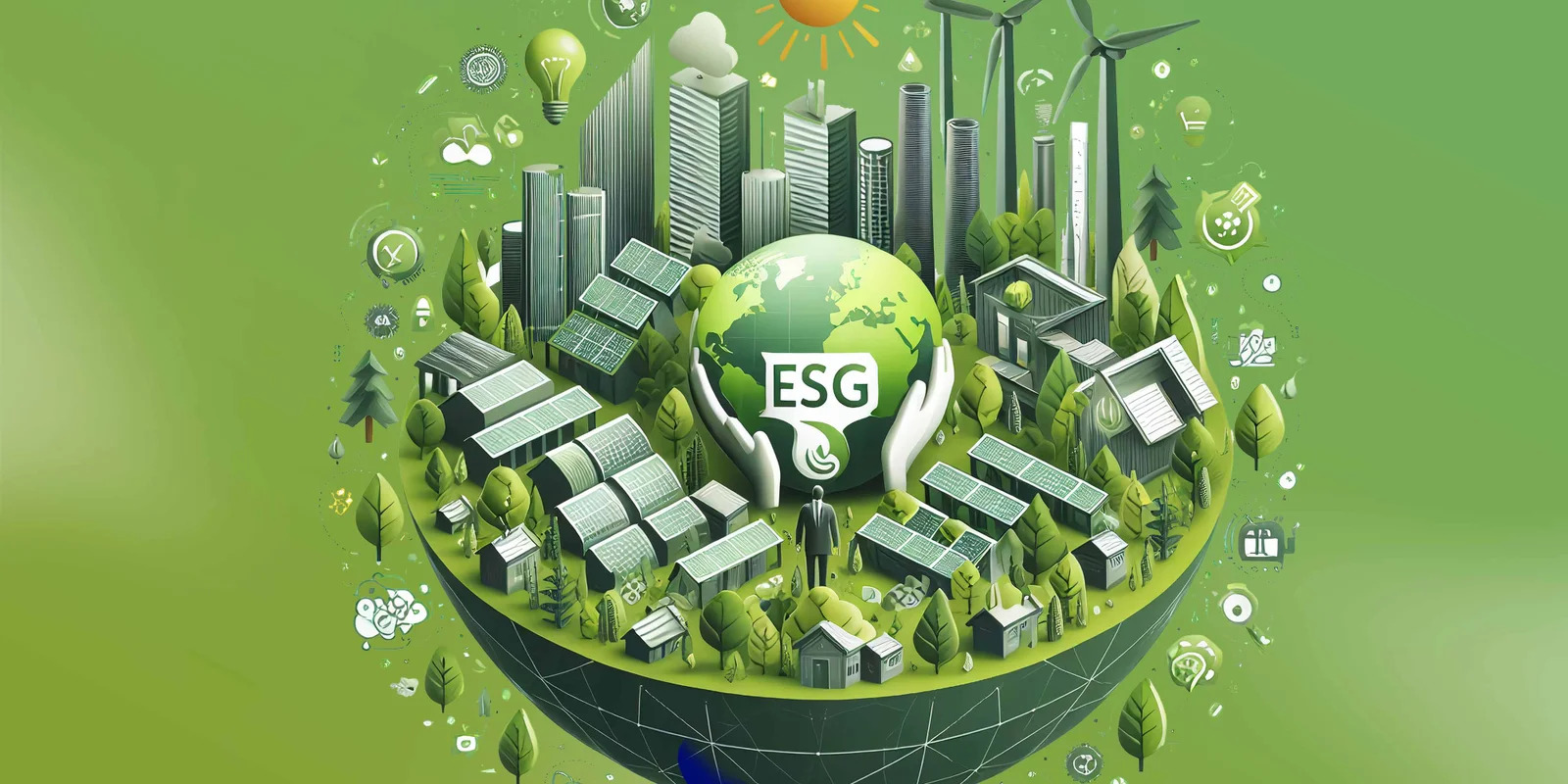INSIGHTS
Navigating the Green Finance Revolution
How ESG Investing is Changing the Financial Landscape

INSIGHTS
How ESG Investing is Changing the Financial Landscape

The finance industry is undergoing a profound transformation, driven by the rise of ESG (Environmental, Social, and Governance) investing. This shift, often referred to as the "green finance revolution," reflects a growing recognition that financial performance and sustainability are deeply interconnected. As we delve into 2024, several key trends are reshaping the financial landscape, offering both challenges and opportunities for investors and businesses alike. Below, we explore the key developments driving this transformation.

Strengthened Regulatory Frameworks and Disclosure Requirements One of the most significant developments in ESG investing is the tightening of regulatory frameworks across the globe. Governments and regulatory bodies are implementing more stringent rules to ensure that companies are not just paying lip service to sustainability but are genuinely integrating ESG principles into their operations. For instance, the European Union is set to introduce the EU Green Bond Standard, which will establish rigorous transparency and reporting requirements for green bond issuers. This move is expected to enhance investor confidence and set a higher benchmark for sustainability reporting.
The Integration of AI and the Circular Economy Another trend gaining momentum is the integration of Artificial Intelligence (AI) in ESG investing. AI is revolutionizing the way companies collect, analyze, and report sustainability data. By leveraging AI, businesses can enhance the accuracy of their ESG assessments, streamline reporting processes, and identify new opportunities for improving their sustainability performance. This technological advancement is crucial as investors increasingly demand more granular and reliable ESG data. Simultaneously, the concept of the circular economy is becoming a cornerstone of sustainable finance. Unlike the traditional linear economy, where resources are used once and discarded, the circular economy focuses on designing products and systems that prioritize reuse, recycling, and regeneration. This approach not only reduces waste but also conserves resources, making it a critical component of long-term sustainability strategies. As more companies adopt circular economy principles, they are finding new ways to innovate and create value while minimizing their environmental impact.
Innovations in Sustainable Debt Markets The sustainable debt market continues to expand, driven by innovations in financial instruments such as Sustainability-Linked Bonds (SLBs). These bonds tie financial outcomes to specific sustainability targets, incentivizing companies to achieve their ESG goals. However, the success of SLBs hinges on setting realistic and achievable targets. A recent example is ENEL, a major issuer of SLBs, which failed to meet its sustainability performance targets, resulting in financial penalties. This incident underscores the importance of setting credible goals and highlights the potential risks associated with overpromising on sustainability. Despite these challenges, the sustainable debt market remains a dynamic space, with new products and strategies emerging to meet the growing demand for ESG-aligned investments. Investors are increasingly drawn to these instruments as they offer the potential for both financial returns and positive environmental impact.
The Growing Importance of Social Impact While environmental concerns have traditionally dominated the ESG agenda, the social dimension is becoming increasingly important. Social factors, such as labor practices, community engagement, and human rights, are now critical considerations for investors. This shift is particularly evident in the workforce, where employees are placing greater emphasis on their employers' ESG commitments. Companies that fail to prioritize social impact may struggle to attract and retain top talent, especially among younger generations who are more likely to seek out employers that align with their values. Moreover, the social component of ESG is influencing consumer behavior, with more consumers favoring brands that demonstrate a commitment to social responsibility. As a result, businesses are under increasing pressure to address social issues and integrate them into their overall ESG strategies.
Expanding Carbon Pricing and Renewable Energy Investments Carbon pricing is emerging as a critical tool in the fight against climate change. By assigning a cost to carbon emissions, carbon pricing mechanisms encourage companies to reduce their carbon footprint and invest in cleaner technologies. This trend is gaining traction as governments and financial institutions recognize the need to align economic incentives with environmental goals. In addition to carbon pricing, investments in renewable energy are at the forefront of the green finance revolution. Solar energy, in particular, is seeing significant growth, driven by technological advancements and supportive government policies. The European Union, for example, is heavily investing in solar energy projects as part of its broader strategy to achieve a low-carbon economy. These investments not only contribute to the transition to renewable energy but also offer attractive returns for investors seeking to align their portfolios with sustainability objectives
The green finance revolution is not just a trend; it represents a fundamental shift in how the financial industry operates. ESG investing is reshaping the financial landscape, driven by stronger regulatory frameworks, technological advancements, and a growing emphasis on social impact. As these trends continue to evolve, businesses and investors that embrace ESG principles will be better positioned to navigate the complexities of the modern financial world and capitalize on the opportunities that sustainability offers. For those looking to stay ahead in this rapidly changing environment, understanding and integrating these ESG trends into their strategies will be essential. The future of finance is green, and the time to act is now.